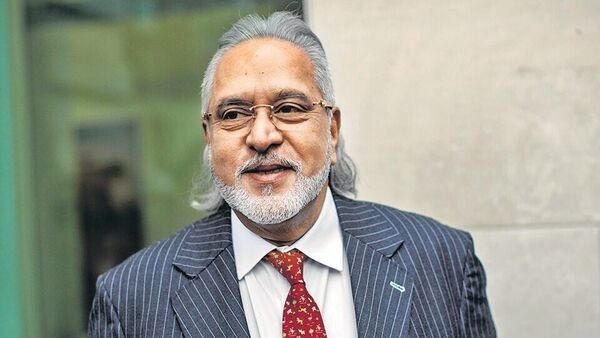Description
Copyright infringement not intended
Picture Courtesy:PIB
Context:
India’s electronics manufacturing is entering a new phase as seven projects worth ₹5,532 crore have been approved under the Electronics Component Manufacturing Scheme (ECMS). These projects aim to boost the domestic electronics ecosystem, generate production worth ₹44,406 crore, and create over 5,000 new jobs.
What is “Electronics Component Manufacturing Scheme (ECMS)”?
The Electronics Component Manufacturing Scheme (ECMS) was launched to boost India’s electronics manufacturing ecosystem by supporting domestic production of high-value components. It is a key initiative under the government’s strategy to make India a global electronics hub.
Objectives
The scheme aims to:
- Strengthen Domestic Manufacturing – Promote production of essential electronic components, sub-assemblies, and raw materials within India.
- Attract Investments – Encourage both domestic and foreign investments across the electronics value chain.
- Boost Value Addition – Increase domestic value addition in electronics production.
- Integrate with Global Supply Chains – Position India as a key player in international electronics trade.
- Create Employment – Generate both direct and indirect jobs in the electronics manufacturing sector.
Products Supported:
ECMS supports a wide range of high-value components essential for modern technology, including:
- Camera module sub-assemblies
- Multi-layer and high-density interconnect (HDI) printed circuit boards (PCBs)
- Copper-clad laminates
- Polypropylene films (used in capacitors)
Current trends in electronic:
- India’s electronics production in FY 2024‑25 reached about ₹11.3 lakh crore, a six‑fold increase from ₹1.9 lakh crore in 2014‑15.
- Value addition in electronics manufacturing has risen to around 70%, and is projected to reach 90% by FY27.
- Electronics exports are growing strongly: for instance, exports reached almost ₹2.87 lakh crore (April‑Feb FY25) with ~35% year‑on‑year growth.
- Employment in the electronics manufacturing sector is estimated at 5 million (25 lakh) persons.
- India has set an ambition to reach USD 500 billion (~₹40‑50 lakh crore) in electronics manufacturing by 2030.
- For 2025‑26, the goal is to hit around USD 300 billion in production from electronics, according to government targets. (Source: PIB)
Picture Courtesy:PIB
Multi-dimensional implication of India’s Electronic Growth:
Economic Implications
- Investment & Output Growth: Schemes like ECMS attract domestic and foreign investment. As of 2025, ECMS commitments reached over ₹1.15 lakh crore, generating projected output of ₹10.3 lakh crore over six years.
- Job Creation: Direct employment of ~1.4 lakh people plus indirect opportunities strengthen livelihoods.
- Export Competitiveness: Electronics exports, particularly mobile phones and components, contribute significantly to foreign exchange and improve the trade balance.
Technological Implications
- Innovation & R&D: Manufacturing advanced components like HDI PCBs, camera modules, and semiconductors requires R&D, fostering a tech-driven ecosystem.
- Skill Development: Advanced manufacturing encourages creation of specialized jobs in design, quality control, and process optimization.
Strategic & Geopolitical Implications: Reduces dependency on imports, especially for critical components in telecom, defence, and medical electronics.
Social Implications
- Employment & Skill Upliftment: Creation of jobs promotes income generation and urban/rural skill development.
- Regional Development: Projects in states like Tamil Nadu, Andhra Pradesh, and Madhya Pradesh help balance industrial growth geographically.
Environmental Implications
- Sustainable Manufacturing: Advanced electronics production may encourage energy-efficient processes, waste recycling, and green tech adoption.
- Electronic Waste Management: Increased production and usage heighten the need for responsible e-waste handling, prompting innovation in recycling technologies.
Challenges:
- Technology Gap: Reliance on imported high-value components and limited advanced manufacturing.Approximately 80 % of components used in Indian electronics are imported.
- Infrastructure: Need for world-class facilities and integrated supply chains.
- Skilled Workforce: Shortage of trained engineers and technicians.Domestic value‑addition in component manufacturing is only about 15‑18%, much lower than global manufacturing hubs.
- Financing: High capital costs and limited MSME funding.Financing costs are high in India, interest rates of 9‑13% compared to 2‑7% in countries like China, Vietnam and Taiwan.
- R&D: Insufficient domestic research and slow commercialization.
- Environmental: E-waste management and sustainable manufacturing.
- Global Competition: Competing with China, South Korea, Vietnam; supply chain vulnerabilities.
Way Forward:
Strengthen Domestic Manufacturing
- Expand production of high-value components (HDI PCBs, camera modules, semiconductors).
- Reduce dependence on imports by improving local supply chains.
Boost R&D and Innovation
- Encourage private and public investment in electronics research.
- Promote innovation hubs and incubation centres for emerging technologies.
Skill Development
- Train engineers and technicians in advanced electronics manufacturing.
- Partner with educational institutions to align curricula with industry needs.
Infrastructure & Ecosystem Development
- Develop world-class manufacturing clusters, testing labs, and logistics hubs.
- Integrate MSMEs into the larger value chain.
Policy & Incentives
- Strengthen schemes like ECMS and PLI to attract investment.
- Ensure faster approvals, predictable incentives, and state-centre coordination.
Sustainability & Environmental Responsibility
- Promote energy-efficient manufacturing practices.
- Implement robust e-waste recycling and management systems.
Global Competitiveness
- Position India as a reliable “Electronics +1” hub alongside China.
- Leverage trade agreements to expand export markets.
Conclusion:
India’s electronics manufacturing sector is at a transformative stage. With schemes like ECMS and PLI, strong investment commitments, and rising domestic production, the country is steadily moving up the global electronics value chain. Growth in high-value components, mobile manufacturing, and exports reflects both industrial capability and strategic self-reliance.
Source: PIB
|
Practice Question
Q. Explain the role of the Electronics Component Manufacturing Scheme (ECMS) in promoting India’s electronics industry. Discuss its impact on investment, job creation, and export growth, and outline the key challenges the sector still faces. (250 words)
|
Frequently Asked Questions (FAQs)
ECMS is a government initiative launched in April 2025 with a total outlay of ₹22,919 crore to promote domestic manufacturing of high-value electronic components, sub-assemblies, and raw materials over six years.
- Increase domestic production of electronic components.
- Attract ₹59,350 crore (and beyond) in investments.
- Generate direct and indirect employment (~91,600 jobs targeted).
- Integrate India into global electronics supply chains and reduce import dependence.
-
- Products include:
- Camera module sub-assemblies
- Multi-layer and HDI PCBs
- Copper-clad laminates
- Polypropylene films for capacitors










